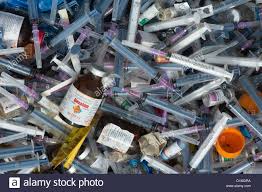WHO Key Facts on Medical Waste
5/6/2019

- Out of all the waste that health care facilities generate, only about 15% of it is hazardous in the sense of it being infectious, radioactive or toxic.
- The main sources of this dangerous waste are hospitals, clinics, laboratories, mortuaries, blood collection and testing services and assisted living facilities for the aged.
- First world nations generate an average of half a kilogram of hazardous waste for every hospital bed per day. Third world nations generate about a fifth of a kilogram per bed. The problem is that third world countries often don’t differentiate between hazardous and non-hazardous waste, so in real terms the quantity they generate is higher.
- Across the globe, about 16 billion injections are given. Not all needles and syringes are correctly disposed of though.
- Some health care waste is burned out in the open. This results in toxic emissions like dioxins and furan being released into the air.
- It’s vital that safe measures are put into place for managing health care waste in an environmentally safe manner. We need to prevent biological and chemical hazards from being released into the environment. This will ensure the safety of health workers and those they care for, as well as the general public.
